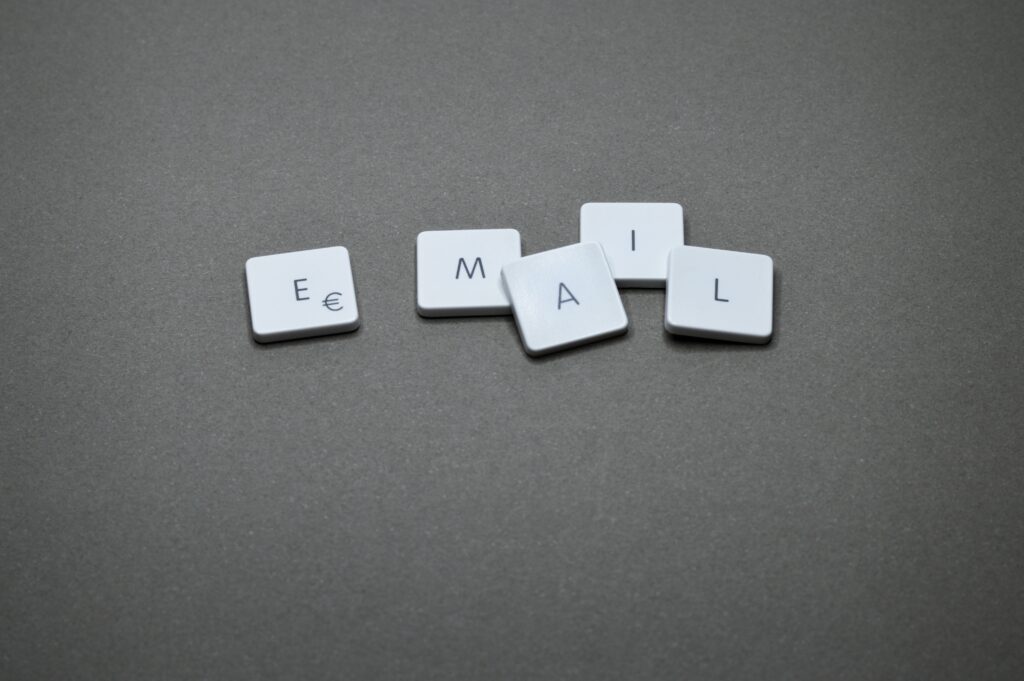Effective Marketing Automation Strategies for Boosting Engagement and ROI
Measuring ROI through marketing automation is crucial for understanding the effectiveness of marketing initiatives.

Email marketing is one of the most efficient ways to reach a large audience. You can send your message to hundreds or even thousands of people with just a few clicks. And, unlike other marketing channels, you don’t need to spend much money to reach your target audience.
Email marketing is an effective and powerful tool for businesses of all sizes. It’s a great way to stay in touch with your customers, and it can help you boost sales and grow your business. It enables companies to reach out to their customers, build relationships, drive loyalty, and generate leads and sales. By understanding the basics of email marketing—from strategy development to tools available businesses can create successful campaigns to help them achieve their goals.
This article will explore email marketing and how it can benefit businesses. We’ll look at strategies for success and the tools available to help get started. Finally, we’ll provide actionable tips on creating successful campaigns and optimizing efforts to maximize ROI (Return On Investment).
Email marketing is a type of digital marketing that involves sending email messages to potential or current customers. It is used as a tool to nurture customer relationships and build loyalty, as well as generate leads and drive sales. Email marketing can be used by any business, regardless of size.
With email marketing, businesses can send out emails containing valuable content such as newsletters, promotions, product updates, and more. These email messages can be customized to fit the brand’s tone of voice and serve as a way to reach out to customers in a nonintrusive yet meaningful way.
When it comes to email marketing success, there are several strategies businesses should keep in mind. For starters, create email messages tailored to the customer’s preferences and interests. Additionally, use email automation tools to reach customers in real-time with email campaigns. Furthermore, email marketing should be part of an overall digital marketing strategy for maximum impact.

Businesses should leverage email templates to save time and effort when creating email campaigns. Email templates are pre-made email layouts that allow businesses to personalize email messages with their branding and messaging easily. Templates can help businesses create visually appealing email campaigns without manually designing email messages from scratch.
Ultimately, email marketing is a powerful tool for businesses of all sizes. It can build customer relationships, drive sales and generate leads. By leveraging email templates and other email automation tools, companies can create successful email campaigns to help them reach their goals.
To get the most out of email marketing efforts, businesses should focus on creating email messages that are tailored to their customer’s preferences, design email campaigns that engage customers, and employ email automation tools such as email templates. By doing this, businesses can maximize the impact of email marketing and drive success.
Email marketing is a powerful tool for businesses of all kinds and sizes, from small startups to large corporations. It is a form of direct marketing that allows companies to communicate with customers and prospects via email in order to promote their products or services. Email marketing allows businesses to reach potential customers, attract new leads, build relationships with existing customers, and establish brand loyalty.
With the help of an email marketing company, businesses can send out personalized messages to potential customers with targeted content designed to engage and build relationships. Email marketing campaigns are cost-effective because they require minimal setup and maintenance costs compared to traditional advertising methods. Furthermore, email campaigns allow for easy tracking of results in order to measure the success of campaign efforts.
Here are a few other advantages:
Email marketing also allows you to segment your audience to send more targeted messages. For example, if you have a list of customers, you can segment them by location, age, or interests. This way, you can ensure that your messages are relevant to each individual recipient and increase the likelihood that they’ll take action.
Email marketing is one of the most efficient ways to reach a large audience. You can send your message to hundreds or even thousands of people with just a few clicks. And, unlike other marketing channels, you don’t need to spend much money to reach your target audience.
Another advantage of email marketing is that it’s easy to track your results. Most email marketing platforms will provide you with data on open rates, click-through rates, and unsubscribe rates. This data can help refine your email marketing strategy and improve your results over time.

Email marketing is also a very personal form of marketing. When you send an email to someone, they feel as though they are being communicated with directly. This helps build relationships with customers and leads to higher customer loyalty.
Another great advantage of email marketing is that it’s easy to automate. With the help of the right email marketing software, once you’ve created a campaign, you can set it up to send automatically on a schedule that works for you. This means you can continue to reach your audience without putting in extra effort each time.
Finally, email marketing provides an excellent opportunity to test different strategies and see what works best for your business. For example, you can test different subject lines and call-to-actions or even send times to see what gets the best response from your subscribers.
Email marketing is also one of the most effective marketing tools available. Studies have shown that email marketing has a high ROI, with some businesses seeing returns of over 3600%. This means that for every $1 you spend on email marketing, you can expect to see $36 in return.
Email marketing is often touted as a powerful tool. However, email marketing does have some potential drawbacks that should be considered before investing in email campaigns.
For one, email marketing takes time upfront to set up. Creating email campaigns requires time spent developing content, designing graphics, and testing email deliverability. Building email lists and segmenting them correctly also takes time and strategy.
On top of that, email deliverability can be a challenge. Spam filters are constantly changing and becoming stricter, meaning email campaigns have to be crafted with compliance in mind. Many email marketing software offer tools for combating spam filter issues, but email marketers must do their due diligence to ensure emails aren’t in the dreaded spam folder.
Despite these potential email marketing pitfalls, email campaigns can be incredibly successful. Email provides a direct line of communication with customers and allows businesses to tailor messages and offers specific to each customer’s interests. This personalized approach increases the likelihood of email success, as does segmentation and email list hygiene – more often than not, email marketing campaigns tailored to specific customer segments achieve greater success than email blasts sent out to the entire email list.

With the right strategies and tools, email marketers can maximize their output and build authentic relationships with customers, create brand loyalty and trust, and drive sales and leads. Email campaigns also allow a business to target specific customers with tailored offers and messages, making email campaigns more effective than other forms of marketing.
Plus, it is incredibly cost-effective compared to traditional advertising methods. Investing in email marketing software is much cheaper than buying ad space in print or on TV. Furthermore, email campaigns allow businesses to track the success of their efforts to the last penny.
Businesses can take advantage of several types of email marketing techniques, each with unique advantages.
One email marketing strategy is email newsletters. These can provide customers with helpful information and updates and keep them informed of new offers and promotions. Such email campaigns are also a great way to build customer loyalty, as customers will appreciate being kept in the loop about what’s happening with your business.
A prospecting email is the first email you send to a new lead. It’s designed to introduce your brand and get the recipient interested in what you have to offer.
An engagement email is an email you send to a lead who has already shown some interest in your product or service. An engagement email aims to get the recipient to take a specific action, such as signing up for a free trial or attending a webinar.

You send an announcement email to announce a new product, feature, or event. The goal of an announcement email is to generate excitement and get recipients to take action, such as pre-ordering a new product or registering for an event.
A contest email is an email you send to promote a contest or giveaway. The goal of a contest email is to generate interest and get people to enter the contest.
A timing email is an email you send when you’re running a limited-time offer or sale. A timing email aims to create a sense of urgency and get recipients to take action before the offer expires.
Whatever your email marketing strategy, it is important to ensure that email campaigns are well-crafted and optimized for maximum effectiveness. To help ensure success, email marketing tools such as email automation platforms and email list management systems can be used to save time and improve performance.
All email campaigns require an email list (read a good email list) to succeed. Building a quality email list is essential for any email marketing strategy. Here are some tips for getting started:
This may seem like a no-brainer, but you’d be surprised how many businesses don’t have an opt-in form on their website. If you want people to sign up for your email list, you need to give them a way to do it! Include an opt-in form on your homepage, blog, and anywhere else you can think of.
People are more likely to sign up for your email list if they get something in return. This “something” doesn’t have to be big or expensive – a free ebook, white paper, or even a coupon code will do the trick. Just make sure it’s something that your target audience will find valuable.
Make sure to let your followers know that you have an email list and that they can sign up for it. Use social media platforms like Twitter, Facebook, and Instagram to promote your opt-in form and offer. You can also use paid social media advertising to reach a wider audience.
Running a contest is a great way to get people to sign up for your email list. People love the chance to win prizes, so this is an effective method for growing your list quickly. Just make sure to promote the contest on all your channels (social media, website, etc.) and clearly state the rules and how people can enter.
Reach out to other businesses or influencers in your industry and see if they’re interested in collaborating with you to promote each other’s products or services. This is a great way to reach a new audience and grow your email list quickly.
Ensure every email you send has a clear call-to-action (CTA) telling recipients what you want them to do next – visiting your website, signing up for a free trial, or making a purchase. Include a link to your opt-in form in every CTA so people can easily sign up for your email list from anywhere.
Email marketing services make it easy to manage large email lists and send mass emails without having to worry about things like deliverability or spamming complaints.
Don’t just email anyone and everyone. Develop an email list of engaged customers looking forward to your messages rather than emailing people who aren’t interested in hearing from you.

Target your email campaigns around specific topics relevant to your customer base. This will help you create email campaigns that are more engaging and effective.
Use email marketing as an opportunity to build relationships with your customers. The more valuable content and offers they receive, the more likely they are to stay engaged in your email list.
These tips should help you get started on the email list-building process. Once you have a good email list, your email marketing strategy’s next step is creating and sending effective campaigns.
Successful email marketing campaigns require careful planning and creative content. You should consider what you want to achieve, your target audience, and how best to reach them. These elements should be considered when crafting catchy subject lines, personalizing messages with the recipient’s name or interests, and segmenting your lists based on customer type or preference.
Once you know who you’re targeting, it’s time to design an email that resonates with them and drives the desired action.
Fortunately, there are several tools available to help make this process easier. From email builders such as MailChimp and Constant Contact to analytics platforms like Google Analytics, various options exist. All these services offer the ability to track open and click-through rates and build detailed campaigns that can be customized for each recipient.
You can create effective campaigns that drive customer loyalty, engagement, and sales by utilizing the right email marketing tools and techniques. With a bit of practice and experimentation, you can become an email marketing pro in no time!
Writing a successful email marketing campaign requires careful planning, creative content, and the right tools. To get started, you should first consider the emails most effective for your target audience. For instance, if you’re targeting millennials or Gen Zers, a more informal style may work better than traditional newsletters or promotional messages.
It’s also important to craft catchy subject lines that capture recipients’ attention so they open your email in the first place. Once you have their attention, personalizing messages with their name or interests can help make your communication more engaging and strengthen customer relationships.
Next, segmenting customer types based on preferences and sending tailored campaigns to each group is key for success. This ensures everyone receives relevant information that resonates with them and increases the likelihood of them taking action, such as making a purchase or signing up for an event/course.
Finally, utilizing analytics platforms like Google Analytics will help track open rates as well as click-throughs from different segments of customers so you can measure how successful each campaign was and adjust accordingly in future ones. With these tips in mind, plus employing services like MailChimp or Constant Contact to assist with delivery & design –you’ll be well on your way to creating email campaigns that get noticed and drive results.
Bonus tip: Test different types of content such as videos, images, GIFs, or polls in order to increase engagement & optimize your efforts. Keep experimenting until you find what works best for your business needs!
When it comes to email marketing, timing is critical. Knowing the best time to send your emails can be the difference between a successful campaign and one that falls flat. Research has shown that certain days and times are more effective for sending messages than others.
For example, Tuesdays are the most popular day for sending emails as they are least likely to compete with other types of disruption like social media or television commercials. Additionally, studies have found that 11 am – 2 pm is usually the optimal window during which people open their emails, so try scheduling your campaigns around this time if possible.
Ultimately, each business should experiment with different strategies to find what works best for them since every audience is different.

Regardless of when you send your emails, a few types of email marketing strategies can help boost engagement and drive conversions. The most common types include newsletters, promotional emails, transactional emails, triggered messages, and remarketing campaigns.
Newsletters are generally sent on a regular basis–be it weekly or monthly–and are filled with content that encourages readers to stay informed and engaged. Promotional emails offer customers incentives such as discounts or exclusive offers, while transactional emails typically provide information about a customer’s purchase or shipment status.
Triggered messages are sent when a certain event occurs, like the customer signing up for your newsletter or abandoning an online cart. Lastly, remarketing campaigns are designed to target prior customers who may be interested in making another purchase.
The types of emails you choose to send will depend on your overall business goals and objectives. But regardless of the types you decide on, several tools can help make email marketing easier and more successful. With the right email marketing platform, eCommerce businesses can create automated emails based on customer behavior or specific triggers.
Additionally, there are tools that can help design and optimize emails for maximum engagement and success.
That depends on your email strategy. If you’re using email to stay in contact with customers, you should send emails at least once a week. But if you’re using email to drive traffic to your website, you should send emails at least once daily.
There’s no one “best” day of the week to send emails because everyone’s audience is different, and everyone’s email content is different. However, there are general rules of thumb that you can follow to increase your chances of getting your email read.
For example, Tuesday is statistically the most popular day for people to open emails, so it might be a good day to send an email if you’re looking for a high open rate. Meanwhile, Thursday is the most popular day for people to click on links in emails, so if you include a link in your email, Thursday might be a good day to send it.
At the end of the day, it all comes down to testing and experimenting with the times.
There’s no one-size-fits-all answer to this question since the best time to send emails depends on your audience and their habits. However, here are a few general tips to keep in mind:
1) Timing is everything: Try to send your emails during peak hours when your recipients are most likely to be checking their email.
2) Know your audience: If your recipients are early risers, try sending your emails before 9 am. If they’re night owls, shoot for after 6 pm.
3) Test, test, test: The only way to really know what works best for your audience is to experiment with different times and see what yields the best outcome.
It depends. Some people might need more or fewer emails, depending on their work/personal life balance and how connected they are to their email. But generally, 3-5 emails per month should be enough for most people. 🙂
It depends on what you’re trying to achieve. A shorter subject line is more likely to be read, but a longer one can create a sense of urgency or importance.
Ultimately, it’s up to you to decide what length will work best for your particular email campaign. Make sure your subject line is catchy and relevant and accurately reflects the email’s content. Otherwise, you risk losing your readers’ attention before they even have a chance to open the message.
There’s no one answer to this question since the ideal length for an email copy depends on a variety of factors, such as the type of email, the audience you’re targeting, and your overall goal. But as a general rule of thumb, it’s best to keep your email copy short and sweet—around 200-250 words or so.
That said, there are exceptions to every rule, so feel free to experiment with different lengths to see what works best for you. Just make sure that whatever you do, you stay clear and concise and avoid getting bogged down in unnecessary details. Your readers will thank you for it!
There’s no one-size-fits-all answer to this question, as the best way to format your email copy will vary depending on your audience and their preferences. However, here are some general tips to help you get started:
– Start by introducing yourself and explaining why you’re emailing them
– Keep your message short and to the point, and make sure each paragraph only contains one idea
– Use clear, concise language that’s easy to understand
– Format your email using a simple font like Arial or Verdana, and use plain text rather than HTML
– If you include attachments, make sure they’re clearly labeled and easy to open
There’s no one-size-fits-all answer to this question, as the best way to improve your email open rates will vary depending on your target audience and the content of your emails. However, here are some tips that might help:
Email marketing isn’t going anywhere, and if you’re not doing it, you’re missing out on a huge opportunity to reach your audience. With careful planning and execution, email marketing can grow your customer base and drive sales.
The most important part of any email marketing campaign is understanding your audience and what they want to see from you. Once you have a handle on that, the sky’s the limit regarding strategy, so don’t be afraid to experiment. And finally, take advantage of the many tools available to help with list management, automation, design, and more. With the right tools, you’ll be well on your way to a successful email marketing campaign.
And with the wealth of online resources, there’s no excuse not to get started. We’d love to chat if you need help getting started or just want someone else to handle everything. We’re always happy to help our clients grow their businesses, and if you need any more help, don’t hesitate to get in touch. Let’s take your email marketing game to the next level!